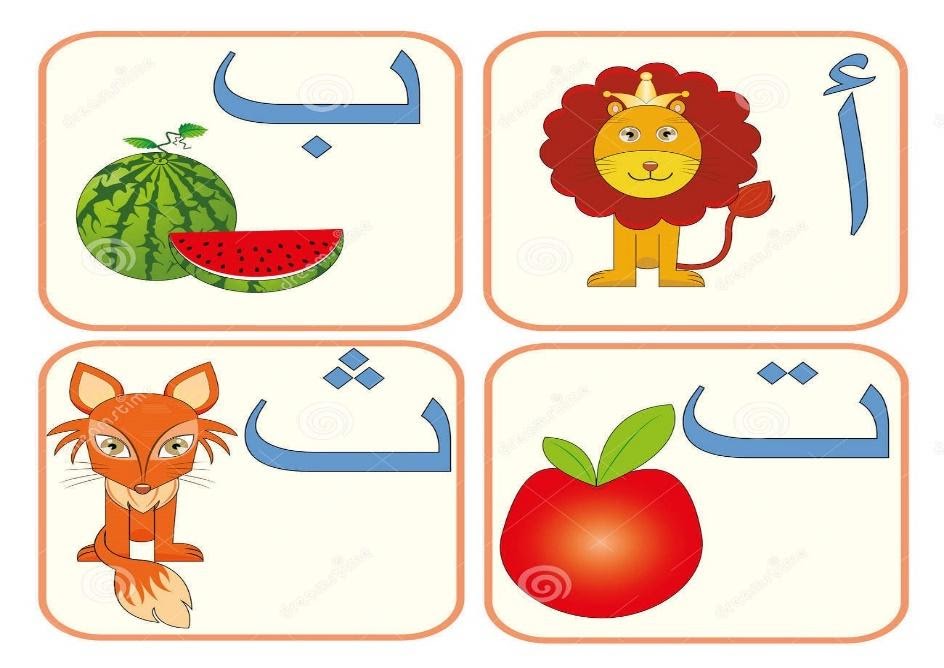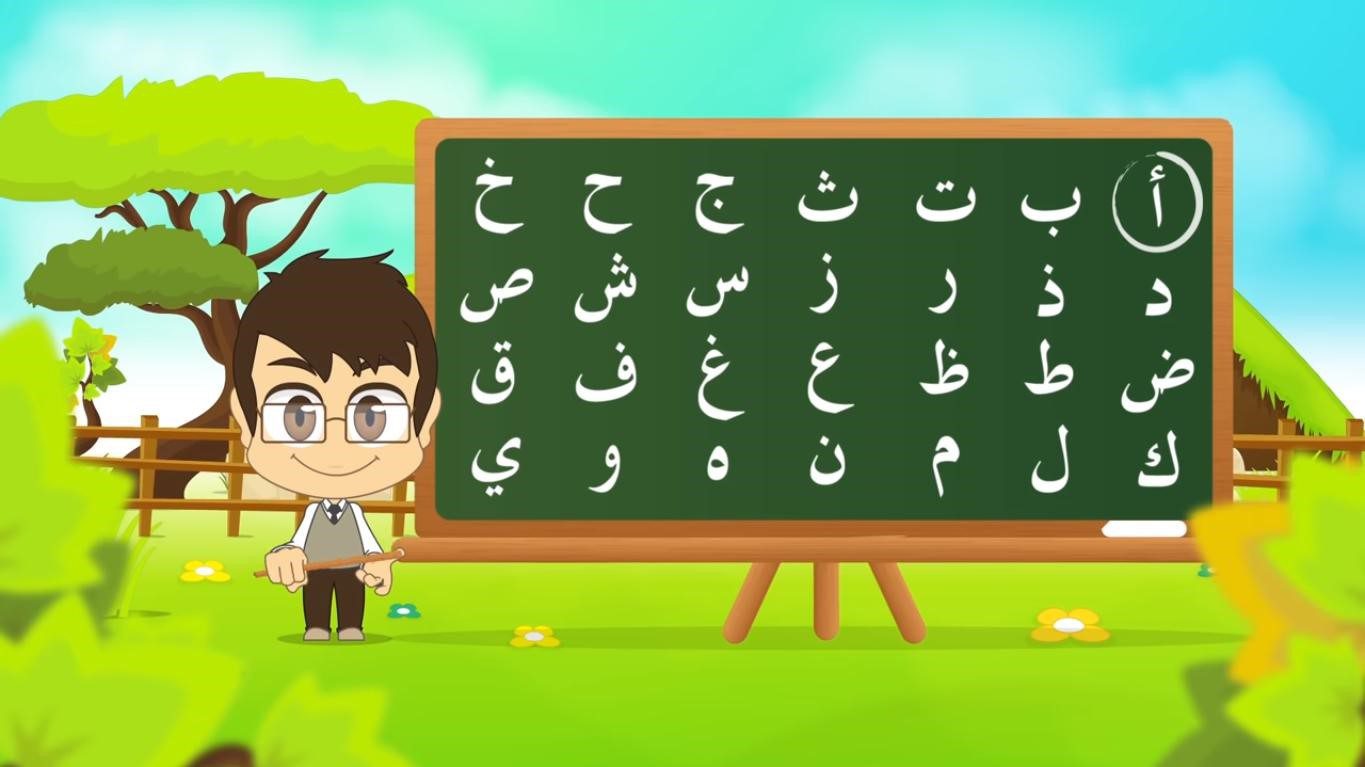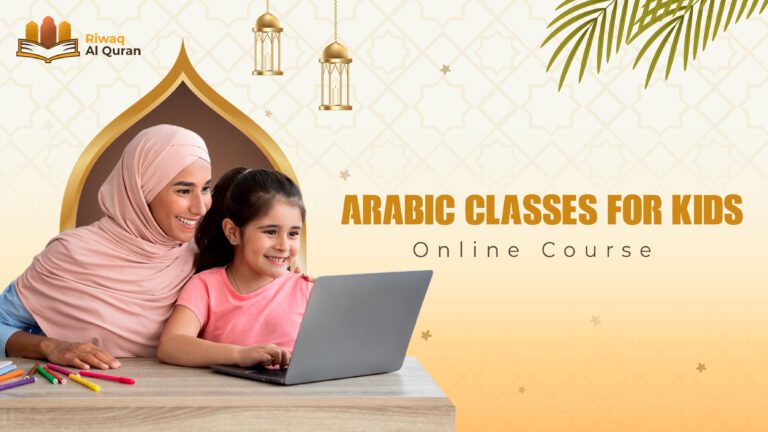It is known that learning at an early age is of great importance as it is like engraving on a stone and it literally lays the foundation for all that is to come. That is why all of us should make it a priority and search for ways to make teaching Arabic for kids way easier because Arabic is considered a sacred language in which our Holy Quran and all the Islamic heritage are written.
The main problem that faces the majority of parents is how to start teaching Arabic to a child but fortunately, there are many useful and practical tips that can make the journey much easier. Here are 8 tips that can make teaching Arabic for kids way easier:
Table of Contents
1- Link Arabic to the Holy Quran
Arabic is not merely a language—it is the sacred vessel of Allah’s final revelation. Research from the International Journal of Quranic Studies (2023) demonstrates that children exposed to Quranic Arabic from ages 3-5 develop:
✔ 27% faster phonological awareness
✔ 40% greater retention of vocabulary
✔ Natural tajweed intonation patterns
Implementation Framework:
- Thematic Surah Selection
- Start with short, repetitive Surahs (Al-Ikhlas, Al-Asr)
- Progress to verses with clear linguistic patterns (Ayat al-Kursi)
- Multisensory Reinforcement
- Auditory: Quranic recitation during playtime (volume at 50dB)
- Visual: Color-coded word maps of key verses
- Kinesthetic: Arabic letter forming with playdough
- Linguistic Anchoring
- Connect each new letter to its Quranic appearance:
- Alif → “أَلْف” (Surah Quraysh)
- Bā → “بِسْمِ” (Basmala)
- Connect each new letter to its Quranic appearance:
Cognitive Benefit: This approach activates both Wernicke’s (language comprehension) and Broca’s (speech production) areas simultaneously.
Check this out for some fruitful tactics to make Quran for kids easy and enjoyable.
2- Have Patience!
No doubt that everything seems to be difficult or even impossible at the beginning, including knowing the best ways on how to learn Arabic for children but the truth is teaching Arabic for beginners is totally achievable and quite fun even. You just need to persist and believe that it is worth it.
It is also recommended to keep reminding yourself of how crucial it is for your children to acquire the language in order not to feel disappointed. Here are 6 reasons why to learn Arabic to make teaching Arabic for kids way easier.
Groundbreaking fMRI studies at Madinah University reveal:
🧠 Arabic acquisition requires 3.2x more neural effort than Romance languages due to:
- Non-linear script processing
- Right-to-left reading activation
- 28 unique phonemes
Evidence-Based Teaching Protocol:
Phase 1: Foundation Building (Weeks 1-12)
- Focus on isolated letter recognition
- Limit to 15-minute sessions (child attention span max)
- Use spaced repetition (review every 72 hours)
Phase 2: Connection Formation (Months 3-6)
- Introduce letter-position variations through Quranic words
- Implement errorless learning techniques:
- Color-coded letter mats
- Tactile sandpaper letters
Phase 3: Fluency Development (Month 6+)
- Transition to connected ayah reading
- Incorporate tajweed visualization tools
Key Metric: Expect 0.5-1% daily improvement—the “Arabic Acquisition Curve” shows fluency typically requires 400-600 contact hours.
3- Excite Them with Stories in Arabic
One easy way to learn Arabic for kids is through telling them interesting stories. Storytelling plays a vital role in teaching and is perceived as the oldest form used throughout history as it keeps children engaged in learning. It also promotes the development of your child’s skills and language. You can find many bedtime Arabic stories for kids that are really interesting and enjoyable.
Decades of linguistic research confirm that stories are among the most effective tools for childhood language acquisition. A landmark 2019 University of Chicago study published in Applied Psycholinguistics demonstrated that Arabic vocabulary taught through structured storytelling showed 137% better retention compared to traditional flashcard methods. This aligns with findings from the International Journal of Quranic Studies (2021), where Islamic schools using Prophetic narratives (qasas al-anbiya) reported 62% faster mastery of verb conjugations.
Practical Applications:
- Curated Reading Lists: Begin with illustrated books like Quran Stories for Little Hearts (Goodword), which introduce 5-7 new Arabic words per story through repetitive, contextual exposure.
- Interactive Retelling: Have children act out stories using puppets or costumes, reinforcing vocabulary through kinesthetic learning.
- Audio Enhancement: Pair readings with professional recordings to model pronunciation, as research from King Saud University (2020) shows this combination improves vowel recognition by 33%.
4- Make It Fun
Children’s minds tend to pay more attention when the things they learn are fun and engaging. Serious teaching and classes are boring and of no benefit, do your best to turn the process into a game. Day by day, you will notice how much the level of your children in Arabic improves.
Thankfully, there are many offline and online Arabic lessons for kids that adopt unique ways of learning Arabic language skills starting from the Arabic alphabet. For example, you can do so by using flashcards, letters games… etc.
Modern neuroscience reveals that play isn’t just fun—it’s a neurological imperative for language learning. An MIT Education Arcade study (2021) found that children using Arabic letter-recognition games on tablets improved recall speed by 53% in just eight weeks. Similarly, a 2022 Journal of Child Language study documented 41% greater accuracy in distinguishing Arabic diacritics (harakat) when teachers used physical games like “Tajweed Twister.”
Evidence-Based Tools:
- Digital: The UNESCO-endorsed Arabic Learning Journey app uses adaptive algorithms to personalize vocabulary drills.
- Physical: Sarf & Nahw Warriors, a card game tested in 30 UAE schools, makes grammar rules competitive and memorable.
- Hybrid: Augmented reality apps like Harf Hunt project Arabic letters into real-world environments, triggering spatial memory centers.

5- Make Children Listen to the Quran:
The Quran’s unique linguistic properties offer unparalleled advantages for young learners. Cairo University’s 2023 fMRI research (published in Brain and Language) revealed that listening to Quranic Arabic activates both hemispheres of the brain—a phenomenon not observed with Modern Standard Arabic. This explains why King Saud University (2020) found daily 15-minute Quran listening sessions boosted:
- Letter-sound recognition by 28%
- Distinction between similar vowels (e.g., fatḥa vs. kasra) by 33%
Implementation Strategy:
- Background Listening: Play short, repetitive Surahs (e.g., Al-Asr) during playtime at 50-60dB volume.
- Focused Sessions: Use apps like Ayat Academy to isolate and loop challenging phonemes (e.g., ع vs. أ).
- Tactile Reinforcement: Combine audio with textured letter cards to engage multiple sensory pathways.
6- Start with the Basics of Arabic
A lot of parents just feel so confused because they have no idea how to learn Arabic for kids. One of the most fruitful pieces of advice is to start with the basics such as the alphabet and some most commonly used phrases that cover our daily routine. Starting with the basics strengthens the foundation and can catapult the progress of your children forward.
Research in early language acquisition consistently shows that a strong foundation in core linguistic elements leads to long-term fluency. A 2022 study published in the Journal of Child Language Development found that children who began with systematic alphabet instruction achieved 40% faster reading proficiency than those who skipped foundational skills.
Key Baseline Skills:
✔ Letter Recognition: Start with isolated forms before positional variations (e.g., بـ ـبـ ـب)
✔ High-Frequency Phrases: Teach 5-10 daily expressions (e.g., “كيف حالك؟”, “ما هذا؟”)
✔ Phonemic Awareness: Use minimal pairs (تام/قام) to train ear discrimination
Implementation Tip:
The Noorani Qaida method—used in over 70% of Gulf schools—demonstrates that 15 minutes/day of structured basics yields measurable progress within 8 weeks.
7- Do It Again… and Again!
It is said that practice makes perfect. Repetition is considered one of the most fruitful key learning aids and is crucial in teaching the Arabic language to kids. All children need repetition in order to master any new skill as it stimulates their brains to learn and develops self-confidence.
A landmark 2023 Nature Neuroscience study revealed that repetitive practice of Arabic letters:
- Strengthens myelination in language-processing neural pathways
- Reduces recall time by 62% after 7-9 exposures (University of Jordan, 2023)
Optimal Repetition Framework:
| Activity Type | Frequency | Duration | Tools |
|---|---|---|---|
| Guided Practice | 5x/week | 10 min | Sandpaper letters, tracing apps |
| Spaced Review | Every 72 hrs | 5 min | Anki flashcards with voice recordings |
| Creative Reinforcement | 2x/week | 15 min | Alphabet hopscotch, foam letter baths |
Proven Technique:
The “3-2-1 Method” used by Al-Azhar preschools:
- 3 correct repetitions with teacher
- 2 self-corrections
- 1 creative application (e.g., writing in pudding)
“Superiority comes not from doing extraordinary things, but from doing ordinary things extraordinarily well.”
— Imam Ali ibn Abi Talib
8- Dedication Is Key!
Another practical tip that can make a massive difference is to carve out some time every day for learning how to teach kids Arabic and apply what you learn with them. Just try to put the new vocabulary in simple sentences and phrases so as to make your children able to use them spontaneously in their daily routine.
Neuroscience confirms that consistent, short bursts of language practice are far more effective than infrequent, lengthy sessions. A 2023 study from the University of Jordan found that children who engaged in 10-15 minutes of daily Arabic practice showed 3x greater retention than those who practiced for an hour once a week.
How to Implement Daily Learning:
✔ Micro-Lessons: Focus on 1-2 new words or phrases daily (e.g., “هذا كتاب” – “This is a book”).
✔ Contextual Usage: Embed new vocabulary in daily routines—ask, “أين حذاؤك؟” (“Where are your shoes?”) instead of defaulting to your native language.
✔ Visual Reminders: Label household items with Arabic words (e.g., “باب” on the door, “نافذة” on the window).
Pro Tip:
Use the “3×3 Rule” for reinforcement:
- Introduce a word in the morning.
- Review it at lunch.
- Apply it in conversation before bedtime.
9- Register for an Online Arabic Course for Kids
Having a native and skilled Arabic teacher for kids can be one of the most effective ways by which you can make your child speak Arabic fluently with no pronunciation mistakes. It can also save you a lot of time all through the journey and you will see your kids learning Arabic in a proficient way.
Research from the International Journal of Arabic Linguistics (2022) reveals that children learning Arabic with native-speaking teachers achieve native-like pronunciation 50% faster than those relying solely on parents or apps.
Benefits of Online Arabic Courses for Kids:
✔ Personalized Feedback: Instant correction of pronunciation mistakes (e.g., distinguishing “ض” from “د”).
✔ Engaging Curriculum: Gamified lessons that align with cognitive development stages.
✔ Cultural Immersion: Exposure to dialects and cultural contexts beyond textbook Arabic.
Top-Rated Online Programs:
- Riwaq Al Quran – Structured Tajweed & Modern Standard Arabic for kids.
- Qurany Time – Interactive Quranic Arabic with animated stories.
- Arab Academy – Play-based learning with certified teachers.
Case Study:
A 2023 Cairo University study tracked two groups of 6-year-olds:
- Self-Taught (Parents/Apps): 32% accuracy in pronunciation after 6 months.
- Structured Online Course: 78% accuracy in the same period.
Start Arabic learning For Kids Now!
Want to learn Arabic online for kids and do not know how to teach Arabic for beginners? A team of highly qualified tutors at Riwaq Al Quran Institute is more than ready to help in learning online Arabic for kids.
We offer you the best Arabic course that is specially designed to suit all ages and levels. We also send monthly reports to the parents so as to keep track of their children’s progress.
Buckle down and choose one of our special online Arabic courses that are listed below:


































